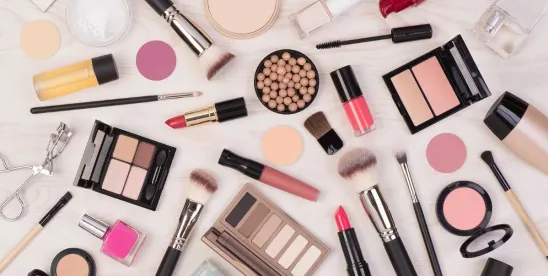1. Cosmetic Facility Registration and Cosmetic Product Listing
Under MoCRA, owners or operators of facilities engaged in manufacturing or processing cosmetic products for distribution in the United States must register each facility with the US Food and Drug Administration (FDA). Similarly, the “responsible person” — more on this below — for every cosmetic product must list each product with FDA. Note that facility registrations must be renewed biennially, while updates to cosmetic product listings must be submitted annually.
As we explained here, registrations and listings may be submitted via paper form or through the new Cosmetics Direct electronic submissions portal. Companies should be aware that the deadline to register cosmetic facilities and list cosmetic products is fast approaching on July 1.
Note that, as with other product types, the FDA is likely to check whether cosmetic facilities and products are properly registered and listed with the agency when reviewing imported shipments at the border. The failure to properly register and list will place product shipments at a heightened risk of being blocked or seized by the FDA at ports of entry.
2. Determining Which Entity is the “Responsible Person”
Under MoCRA, the “responsible person” is defined as “the manufacturer, packer, or distributor of a cosmetic product whose name appears on the label of such cosmetic product” in accordance with the MoCRA general labeling requirement (21 U.S.C. § 364e(a)) or section 4(a) of the Fair Packaging and Labeling Act (15 U.S.C. § 1453(a)).
As noted above, MoCRA requires that the responsible person for a cosmetic product list the product with the FDA. The responsible person is additionally responsible for several other requirements under MoCRA, including:
- Ensuring and maintaining records supporting that there is “adequate substantiation of safety” for a cosmetic product.
- Submitting serious adverse events reports to the FDA.
- Permitting the FDA to have access to and copy records relating to a cosmetic product that the agency believes is likely to be adulterated such that the use or exposure to the product presents a threat of serious adverse health consequences or death to humans.
3. New Labeling Requirements
MoCRA imposed several new labeling requirements for cosmetic products, including:
- As of December 29, 2024: Each cosmetic product label must include a domestic address, domestic phone number, or electronic contact information (which may include a website) through which the responsible person can receive adverse event reports with respect to such cosmetic product.
- As of December 29, 2023: Cosmetic products intended for use only by a professional must bear a label stating as such.
- Cosmetic product labels must identify each fragrance allergen included in the product. Note that rulemaking for this requirement is mandated, but the provisions will not go into effect until the FDA has undergone the formal rulemaking process (which will include determining which substances are considered fragrance allergens).
4. Adverse Event Reporting
The responsible person for each cosmetic product must submit to the FDA any report received of a serious adverse event associated with the product’s use in the United States. Adverse event reports must be submitting within 15 business days after the report is received.
Under MoCRA, a serious adverse event is defined as an adverse event that either:
- Results in:
- Death.
- A life-threatening experience.
- Inpatient hospitalization.
- A persistent or significant disability or incapacity.
- A congenital anomaly or birth defect.
- An infection.
- Significant disfigurement (including serious and persistent rashes, second- or third-degree burns, significant hair loss, or persistent or significant alteration of appearance), other than as intended, under conditions of use that are customary or usual.
- Requires, based on reasonable medical judgment, a medical or surgical intervention to prevent an outcome described above.
5. Safety Substantiation
Per MoCRA, the responsible person for a cosmetic product must ensure, and maintain records supporting, that there is adequate substantiation of safety of the product.
MoCRA defines the term “adequate substantiation of safety” as “tests or studies, research, analyses, or other evidence or information that is considered, among experts qualified by scientific training and experience to evaluate the safety of cosmetic products and their ingredients, sufficient to support a reasonable certainty that a cosmetic product is safe.”
The term “safe,” in turn, is defined to mean that “the cosmetic product, including any ingredient thereof, is not injurious to users under the conditions of use prescribed in the labeling thereof, or under such conditions of use as are customary or usual.” Note that the FDA will “not
consider a cosmetic ingredient or cosmetic product injurious to users solely because it can cause minor and transient reactions or minor and transient skin irritations in some users. In determining … whether a cosmetic product is safe, [FDA] may consider, as appropriate and available, the cumulative or other relevant exposure to the cosmetic product, including any ingredient thereof.”
Importantly, the safety substantiation requirement does not apply to coal-tar hair dye that otherwise complies with the requirements of 21 U.S.C. § 361 (adulterated cosmetics). Nonetheless, the responsible person for a coal-tar hair dye must maintain records related to the safety of the product.
6. Good Manufacturing Practices
Under MoCRA, the FDA is required to establish good manufacturing practices for cosmetic product facilities. While rulemaking for this requirement is mandated, the provisions will not go into effect until the FDA has undergone the formal rulemaking process.
The FDA is currently slated to publish a notice of proposed rulemaking no later than December 29, 2024, and publish a final rule no later than December 29, 2025.
7. Mandatory Recall Authority
Notably, the FDA does not have mandatory recall authority for all products under its regulatory authority. For example, the agency has mandatory recall authority with respect to medical devices, but not with respect to drugs or conventional foods and beverages.
Under MoCRA, however, the FDA has been granted authority to impose a mandatory recall if (1) the agency has determined that there is a reasonable probability that a cosmetic is adulterated or misbranded and the use of or exposure to the cosmetic will cause serious adverse health consequences or death, and (2) the responsible person has refused to voluntarily cease distribution or recall the cosmetic product when provided with an opportunity to do so by the FDA.
8. Ingredient Restrictions
MoCRA contains a number of provisions with respect to the ingredients utilized in cosmetic products:
- MoCRA requires the FDA to promulgate proposed regulations to establish and require standardized testing methods for detecting and identifying asbestos in talc-containing cosmetic products.
- While MoCRA does not prohibit the use of perfluoroalkyl and polyfluoroalkyl substances (PFAS) in cosmetics, it nonetheless requires the FDA to assess the use of PFAS in cosmetic products and the scientific evidence regarding the safety of such use in cosmetic products, including any risks associated with such use. Once this is complete, the FDA will publish a report summarizing the results of this assessment.
- Importantly, MoCRA does not prevent states from prohibiting the use or limiting the amount of an ingredient in a cosmetic product.
While the FDA has not stated as such, the provision regarding PFAS may signal that future restrictions at a federal level are to come for these ingredients. Notably, several states already have laws that ban or restrict the use of PFAS — either all PFAS or a few specifically identified PFAS — in cosmetics. In general, they ban the manufacture, sale, distribution for sale, or offering for sale of any cosmetic to which PFAS have been intentionally added in order to provide a specific characteristic or perform a specific function in that product. In some cases, the state law includes other chemicals in addition to PFAS. It remains to be seen whether the FDA will take action to prohibit the use of PFAS at a federal level.
9. Exemption for Small Businesses and Certain Products or Facilities
Under MoCRA, a small business is defined as a responsible person or owner/operator of a facility whose average gross annual sales in the United States of cosmetic products for the previous three-year period is less than $1,000,000, adjusted for inflation. With the exception of the caveat noted below, such small businesses are not subject to the MoCRA requirements regarding good manufacturing practices, facility registration, and product listing.
Importantly, even if a responsible person or owner/operator of a facility falls within the definition of a small business, they are nonetheless not exempt from the MoCRA requirements regarding good manufacturing practices, facility registration, and product listing if they are the responsible person for or manufacture or process any of the following products:
- Cosmetic products that regularly come into contact with mucus membrane of the eye under conditions of use that are customary or usual.
- Cosmetic products that are injected.
- Cosmetic products that are intended for internal use.
- Cosmetic products that are intended to alter appearance for more than 24 hours under conditions of use that are customary or usual and removal by the consumer is not part of such conditions of use that are customary or usual.
10. Combination Products
Finally, companies should take careful note of products that may be regulated as both cosmetics and another product category that falls under the FDA’s regulatory authority.
For example, while sunscreen is always regulated as an over-the-counter drug in the United States, it may additionally be regulated as a cosmetic in certain circumstances. Whether a sunscreen product will additionally be regulated as a cosmetic ultimately comes down to the intended use and accompanying labeling claims (which inform the intended use). In short, if a sunscreen product is intended to cleanse, beautify, promote attractiveness, or alter appearance, it will also be regulated as a cosmetic.
A cosmetic product or facility that is also subject to the FDA requirements for drugs and devices is exempt from the MoCRA requirements regarding adverse events, good manufacturing practices, facility registration, product listing, safety substantiation, general labeling, records, and recalls. However, if such a facility also manufactures or processes cosmetic products that are not subject to the drug and device requirements, the facility is not exempt from the MoCRA requirements regarding adverse events, good manufacturing practices, facility registration, product listing, safety substantiation, general labeling, records, and recalls with respect to those cosmetic products.
In sum, MoCRA imposes extensive, substantive new requirements on companies marketing cosmetic products in the United States. As the deadlines to comply with these new requirements continue to pass, companies should take care to ensure that their business practices are in line with these provisions.





 />i
/>i

